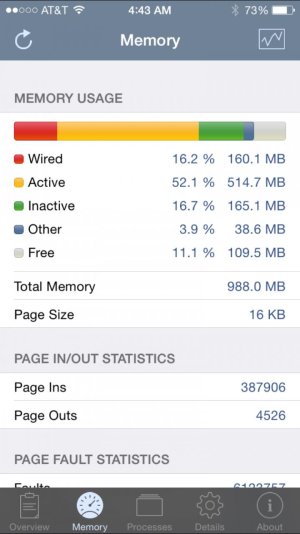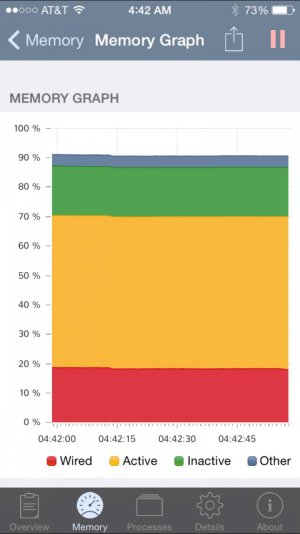If all budget phones were like the 830, the category of "budget phones" would have to be redefined! I think the 830 is a very good mid-level phone and is decently spec'd. Of course, it is not top of the line, but its functional capabilities as a "smart" phone are very good. The biggest problem, from my point of view, for the 830 is not even its SoC (MS had only two options here - either the S200 (which would have really made it into a budget phone) or the S800 (which would have clashed with the 930), but the Windows Phone app eco-system. As it currently stands, the 830 is more than capable of executing its tasks - within reason - well enough.
This leads me to observe one point that to me seems strange. If MS had kitted the 830 with a S800 SoC, leaving everything (yes, including the screen) as the way the 830 currently stands, do you think we would still be having this conversation? So, imagine the 830 with the S800 SoC and priced maybe US$50-75 more. Would that be a device that could viably compete against the iPhone 6?
I guess it's true that if budget phones were built like the 830, they would redefine budget devices, but as the 830 is not priced as a budget device, it does not apply to that category. I'll agree, the 830 carries extras (camera, display) worthy of an "affordable flagship" moniker (not the true 20-MP camera and 1080p display of the high-end 930/1520), but its SoC is so poor (it loses out to the 2012 S4 inside the 820/920) that the "flagship" part of the title is killed. The pricing of it is so high that the "affordable" side is killed as well, leaving us with an awkward device that has the guts of a budget device, the extras of a near-flagship device, and the price of a true flagship. As for the app ecosystem, it doesn't cause me any meaningful fits, but I acknowledge that it still needs to get several popular apps published and running on the majority of devices.
Now, that points about the Snapdragon 800, it's one I definitely need to address. If the 830 carried the same SoC as the 930, it would earn the "affordable flagship" title. You mention a potential clash with the 930, but I disagree for two reasons:
1. The 930 is not available on the majority of U.S. carries, so that segment of the user base (myself included) wouldn't even have something to clash against. To us AT&T users, the 830 would legitimately look like a smaller version of the 1520, same as the 930 does internationally.
2. The 820 carried the 920's SoC without clashing with it. In fact, if you look at the differences between the 830 and the 930, EXCEPT THE SoC, they are almost identical to the things which separated the 820 and 920 when the launched. The 920 had a higher-resolution display and more initial storage. It had a unibody chassis with wireless charging built in. However, the 820 had microSD support, a removable battery and cover, which could allow for wireless charging. Does that sound familiar? It should, because those are the point-for-point differences between the 830 and 930. The one exception is on the camera, but the 8xx has a compromise from the 9xx class in each case, they're just different (the 820 had the same camera resolution as the 920, but not OIS; the 830's camera has the 930's OIS, but at a lower resolution).
If the 830 had the Snapdragon 800, the discussion of how Microsoft skimped on the SoC would obviously not exist, because the point wouldn't exist. If the 830 had a Snapdragon 800 (well, preferably an 801 or 805), I would have praised Microsoft for a serious "affordable flagship" to succeed the underrated 820, and I would probably be a proud 830 owner right now. However, I cannot convince myself to buy the 830 for the same price as the 920, when the 830 has as lower-resolution display and (the important part) a weaker SoC than the 2012 device I have now.
Here's the problem: As Microsoft has taken on the Lumia production, everything has screamed "budget." What has Microsoft announced since taking over Nokia's hardware division?
1. A Snapdragon 400-packing Lumia 830.
2. A Snapdragon 400-packing Lumia 730/735.
3. A Snapdragon 200-packing Lumia 535.
Before that, the last new device announced was ANOTHER Snapdragon 400 device, the Lumia 630/635 (The Lumia 930 was announced at the same time, but it was just an international Icon, which was announced 2 months before). It's been 9 months since we saw an announced flagship Windows Phone device, 7 months if you want to consider the re-announcement of the Icon as the international 930. While that time frame itself isn't bad, it looks horrid when you consider the announcement of 4 budget-class SoC devices since, and the lack of a single high-end device on AT&T, T-Mobile, or Sprint in over a year, with the niche Lumia 1520 (October 2013, AT&T exclusive) as the only announced high-end device. Before that, you would have to back it up all the way to the Lumia 1020 from July 2013 (which carried an SoC from early-2012) to find a high-end U.S. release.
On its face, the fact that we don't have a 930 successor is not worthy of a complaint, because it's not even a year old. Where it becomes moronic is AT&T (allegedly the lead WP carrier) never got the 930, and the only American 930 carrier (Verizon's Icon) has already EoLed its device. There are just too many Windows Phone budget devices being thrown out there, while the high-end Windows Phone devices are getting slaughtered by constant announcements from HTC, Samsung, LG, Apple, and even Google itself.
Basically, the loss of McLaren had killed the 2014 hopes of Windows Phone, and this insane waiting period to Windows 10 is looking like it will kill 2015 for the platform as well. I mean, it's to the point that a replacement for my 920 is so far off that I almost wish I had gotten the 1520 (which I didn't really want) on AT&T Next because I'd be due for another upgrade from that by the time we see a 940 or 1030 on AT&T.
I bet a lot of people use phones more like you than push them really hard. Phones are starting to get fast enough for most users (as PCs did a while back) where we don't need big jumps anymore.
Which is what makes the 830 interesting. For it to compete in real world usage (thx for not bowing to spec wars in your comparison) and come in at $280 cheaper is pretty good. Unfortunately most people have the $280 hidden by contract subsidies and just want the safety of being in the iPhone club.
It will be interesting to see how long Apple can continue to ask for those prices (with no real lower end options) as more people move to unsubsidized plans.
This seems like a rather wayward comparison. The off-contract difference between the 820 and iPhone 6 is $200, while the on-contract difference is $100. I agree that most can live on the Lumia 830's SoC just fine, but when you see that it's a downgrade from the 820's 2-year-old SoC, it becomes hard to accept it. Apple hits its lower-end segment by continuing to push its past 2 models (5C and 5S) at lower prices than before, and those devices actually carrier stronger internals than the 830 as well. So, when you stick the 830 against the same-priced 5S, the 5S has stronger internals. When you meet a comparable device, you're staring at the iPhone 5C, which is cheaper on-contract than the 830.
What's funny is that you mention the subsidies, but the iPhone is actually subsidized more than the Lumia. The same-priced 5C (both are $450 off-contract) is $100 less than the 830, while the $100 on-contract iPhone (the 5S) has a higher, $550 off-contract price. That's been a complaint from carriers for a while now, that they have to eat more money on Apple devices than the competition. Of course the majority of consumers will take the more-powerful device for the same price, especially when it is tagged with the holy Apple logo.



